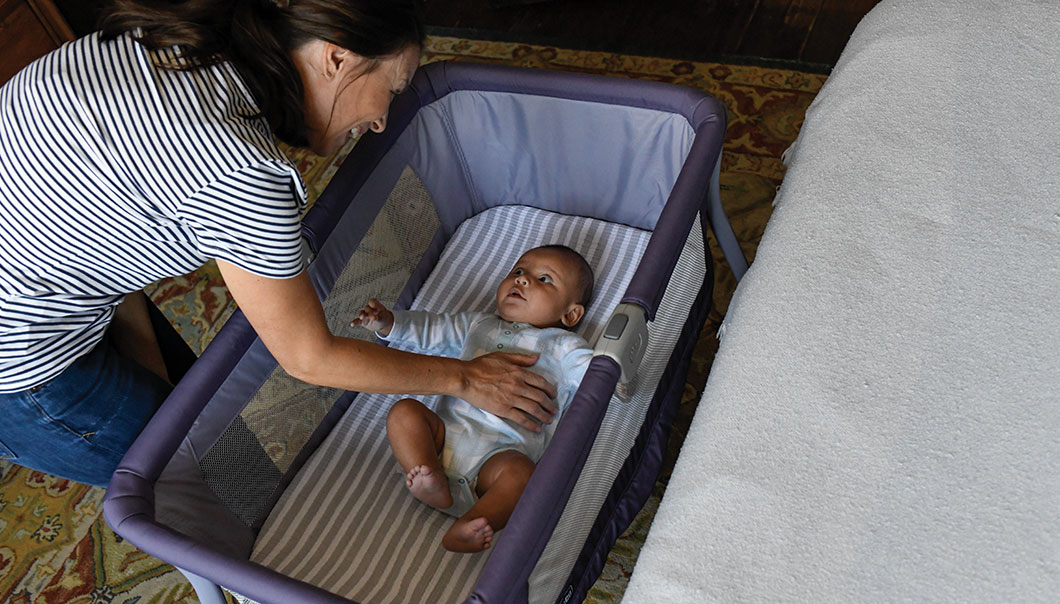تقليل خطر التعرُّض للإصابة بمتلازمة موت الرُّضَّع المفاجئ (SIDS) وأسباب موت الرُّضَّع الأخرى المتعلقة بالنوم.

اتبعي أساسيات النوم الآمن لتقليل خطر التعرُّض لأسباب موت الرُّضَّع المتعلقة بالنوم، والإصابة بمتلازمة موت الرُّضَّع المفاجئ (SIDS).
أ.
عندما يكون الطفل وحده
أبعِدي عن مكان نوم الطفل الأشياء الطرية، أو الدُّمى، أو الوسائد، أو الأغطية، أو الألحفة أو الأشياء المصنوعة من جلد الغنم، أو مصدات سرير الطفل.
لا تضعي الطفل للنوم أبدًا على أسطح طرية مثل الأريكة أو الكنبة، أو الوسائد، أو الألحفة، أو الأشياء المصنوعة من جلد الغنم، أو الأغطية.
ب.
ضعي الطفل على ظهره
نوم الطفل الرضيع أكثر أمانًا عند وضعه مستويًا على ظهره فوق سطح ثابت. كل وقت ينام فيه الطفل مهم. ضعي الطفل للنوم على ظهره في أوقات القيلولة أو أثناء الليل.
*قد تشمل أسطح النوم الثابتة سرير الأطفال الثابت، والمهد المتأرجح، ومناطق اللعب المحمولة المعتمدة من ناحية السلامة.
ج.
النوم في سرير ثابت
آمَن مكان لنوم الطفل هو السرير. استخدمي سطحًا ثابتًا للنوم، كمرتبة موضوعة على سرير معتمد من ناحية السلامة ومُغطاة بِمُلاءة مثبتة.
لا تستخدمي كرسي السيارة للأطفال، أو الحمَّالة، أو الكرسي الهزاز أو منتجًا مماثلاً بوصفها مكانًا لنوم الطفل يوميًّا.
أفعالك تصنع فارقًا حقيقيًّا.
هناك أشياء كثيرة يمكنك فعلها للحفاظ على صحة طفلكِ وسلامته.
- واظبي على زيارة الطبيب خلال فترة الحمل.
- لا تدخِّني، أو تشربي المشروبات الكحولية، أو تتعاطي المواد المخدرة غير المشروعة خلال فترة الحمل أو بعد ولادة الطفل. لا تدخِّني أو تسمحي لغيرك بالتدخين بالقرب من طفلك.
- ألبسي طفلك ملابس نوم خفيفة. اجعلي درجة حرارة الغرفة دائمًا درجة مريحة للشخص البالغ.
- إذا كنتِ ستُرضِعين طفلك على سريرك، فاحرصي على إعادته إلى مكان نوم مستقل بعد انتهائك من الرضاعة. استخدمي سريرًا ثابتًا، أو مهدًا متأرجحًا، أو منطقة لعب محمولة معتمدة من ناحية السلامة مجاورة لمكان نومك.


تعمل هذه المؤسسة بمبدأ تكافؤ الفرص.